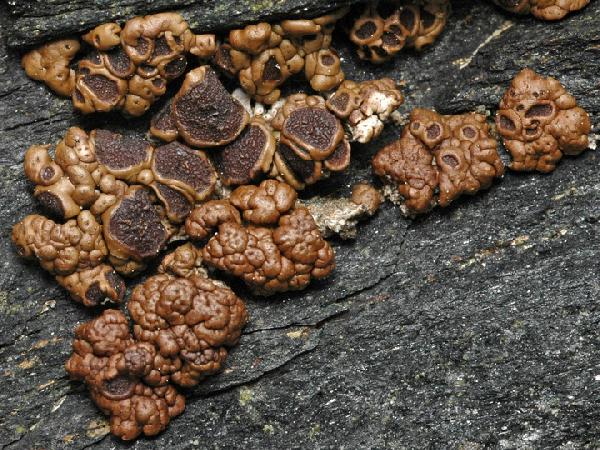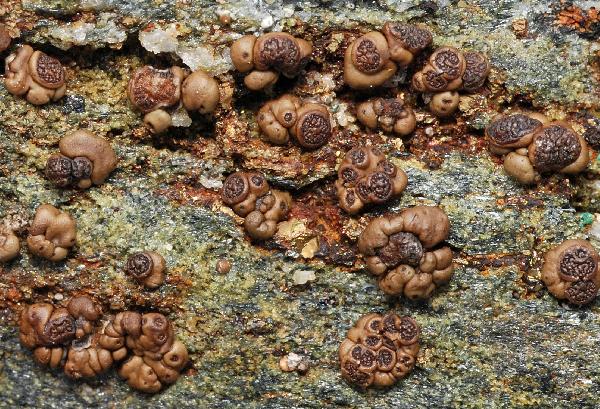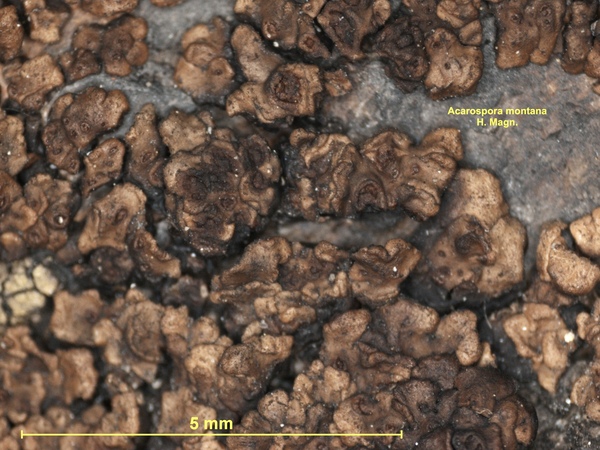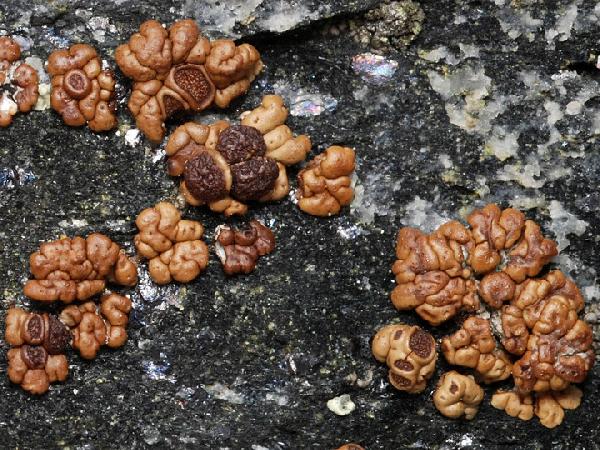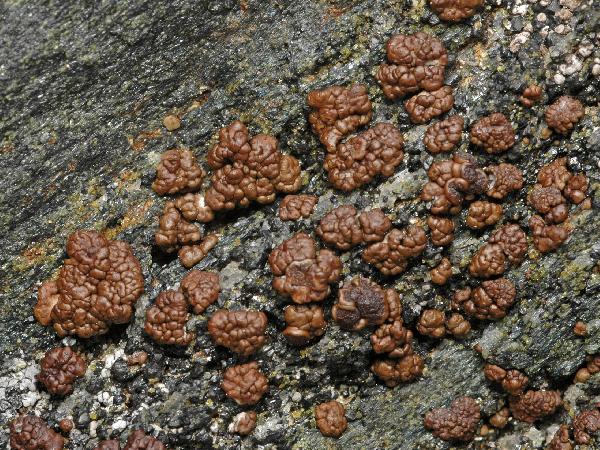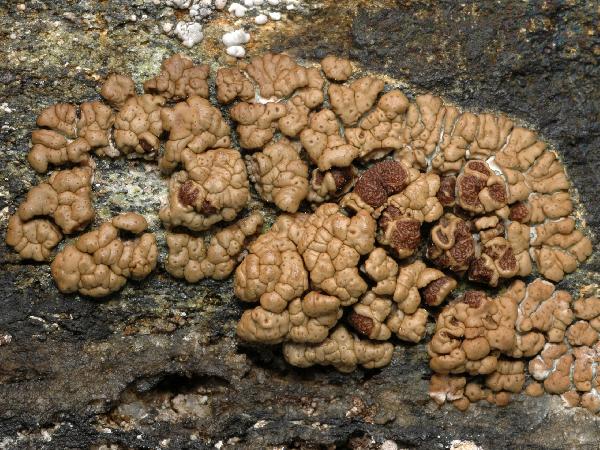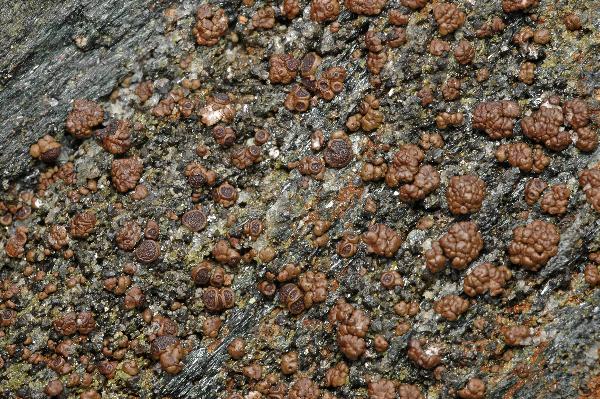Acarospora rugulosa Körb.
Parerga Lichenol., 1: 59, 1859
Synonyms: Acarospora montana H. Magn.; Polysporinopsis rugulosa (Körb.) Vězda
Distribution:
Description: Thallus crustose, episubstratic, areolate, dark brown to reddish brown, matt, the areoles up to 1.5 mm broad, rounded or indistinctly lobed, convex. Cortex 30-45 µm thick; underside pale. Apothecia 1 to 3-8 per areole, immersed, up to 0.5 mm across, with a concave to flat, black-brown, rugose or umbonate disc, and a usually prominent thalline margin. Proper exciple 10-20 µm thick, I-; epithecium reddish brown; hymenium colourless, (110-)125-140(-175) high, the hymenial gel hemiamyloid, K/I+ light blue fading to light red; paraphyses 1.5-1.8 µm thick at mid level, the apical cells capitate, 4-5 µm wide; hypothecium colourless. Asci 100-200-spored, clavate, the apical dome K/I-. Ascospores 1-celled, hyaline, broadly ellipsoid, 3-5 x 1.8-2 µm. Photobiont chlorococcoid. Spot tests: cortex K-, C+ red, KC+ red, P-. Chemistry: gyrophoric acid. Note: a species of the A. squamulosa-complex, growing on siliceous, often iron-containing rocks, known from several stations in the eastern (Austria) and western (France) Alps. It mainly differs from A. squamulosa s.str. in the taller hymenium, and in molecular data (see Knudsen & al. 2019). To be looked for in Italy.
Growth form: Crustose
Substrata: rocks
Photobiont: green algae other than Trentepohlia
Reproductive strategy: mainly sexual
Species of metal-rich rocks
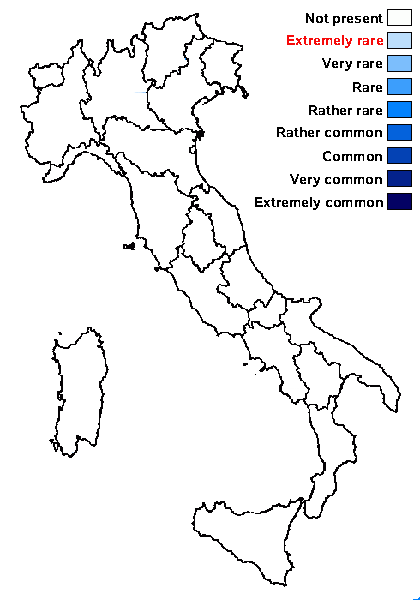
Predictive model
Growth form: Crustose
Substrata: rocks
Photobiont: green algae other than Trentepohlia
Reproductive strategy: mainly sexual
Species of metal-rich rocks

Predictive model
 INDEX FUNGORUM
INDEX FUNGORUM
 GBIF
GBIF
